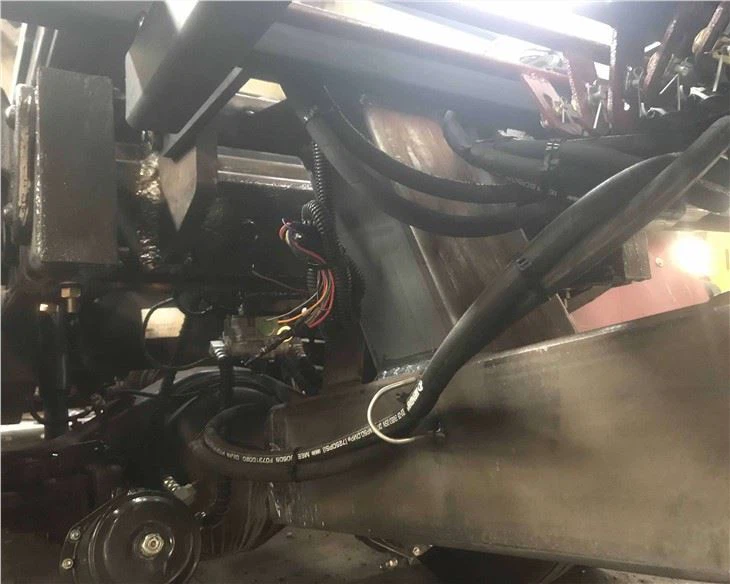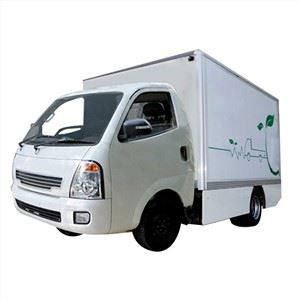Electric Axle for Truck: The Future of Sustainable Transportation

Introduction
As the world shifts toward sustainable energy solutions, the transportation sector is evolving rapidly. One of the most groundbreaking innovations in this space is the electric axle for trucks. Unlike traditional drivetrains, electric axles combine the capabilities of an electric motor and axle assembly, leading to more efficient, cost-effective, and environmentally friendly transportation solutions. This article serves as a comprehensive guide to electric axles for trucks, exploring their benefits, functionality, implementation, and what the future holds.
What is an Electric Axle?
An electric axle integrates an electric motor and power electronics into the axle of a vehicle. Unlike conventional axles, which are primarily mechanical, electric axles provide direct drive capabilities, facilitating efficient energy use and enhancing vehicle performance.
How Electric Axles Work
Electric axles operate by converting electric energy stored in batteries into mechanical energy that drives the vehicle’s wheels. This process involves several components:
- Electric Motor: Located within the axle housing, it provides torque and propels the vehicle.
- Power Electronics: Converts DC from the batteries to AC for use in the motor, controlling the motor’s speed and performance.
- Connected Systems: These can include regenerative braking systems, sensors, and communication systems that enhance the overall functionality.

Benefits of Electric Axles for Trucks
1. Environmental Impact
Electric axles are significantly more sustainable than traditional systems. They run on electricity, which can be sourced from renewable sources, dramatically reducing greenhouse gas emissions.
2. Cost Savings
Although the initial cost of electric axles can be higher, long-term savings on fuel, maintenance, and taxes can outweigh these expenses. Electric motors tend to be more efficient, reducing the overall operational costs.
3. Enhanced Performance
Electric axles provide instant torque, improving acceleration and driving dynamics. This can be particularly beneficial for heavy-duty trucks navigating hilly terrains.
4. Lower Noise Pollution
One of the more subtle benefits of electric axles is their silence. Reduction in noise pollution is often welcomed in urban environments where trucks operate.
Types of Electric Axles
1. In-Wheel Motors
In-wheel motors integrate the electric motor inside the wheel hub. This setup frees up space for other components and reduces weight, enhancing efficiency.
Advantages
- Reduced drivetrain complexity
- Better space utilization
- Enhanced handling and stability
2. Central Drive Axles
Central drive axles host the electric motor in the chassis, connecting to wheels through traditional mechanical linkages.
Advantages
- Less unsprung weight
- Ideal for heavy-duty trucks
- Easier maintenance
Key Components of Electric Axles
1. Electric Motors
Electric motors are the heart of the electric axle, providing power based on the vehicle’s requirements. Types of electric motors include:
- Brushless DC Motors
- Induction Motors
- Synchronous Motors
2. Battery Systems
The efficiency of electric axles depends significantly on the battery system. Lithium-ion batteries are the most common due to their high energy density and efficiency.
Battery Types
| Battery Type | Energy Density (Wh/kg) | Lifespan (Cycles) |
|---|---|---|
| Lithium-ion | 150-250 | 500-2000 |
| Lead Acid | 30-50 | 200-500 |
3. Power Electronics
Power electronics manage the electrical energy supplied to the motor, maximizing efficiency and performance through sophisticated control systems.

Challenges of Implementing Electric Axles
1. Infrastructure Limitations

The current infrastructure for electric vehicle charging and maintenance is not fully developed, posing challenges for electric axle adoption in heavy-duty trucks.
2. Initial Costs
Despite long-term savings, the upfront investment for electric axles and associated battery technologies can be considerable, which may deter some businesses.
3. Range Anxiety
Trucking companies may fear that electric vehicles will not provide sufficient range for long-haul routes, although advancements are being made to extend these distances.
Real-World Applications of Electric Axles
1. Urban Delivery Trucks
Many urban delivery trucks are replacing traditional drivetrains with electric axles to minimize their ecological footprint in city centers while capitalizing on the benefits of regenerative braking for route optimization.
2. Long-Distance Hauling
Leading logistics companies are exploring electric axles in long-distance hauling to reduce fuel costs significantly and comply with increasing regulatory pressures regarding emissions.
3. Public Transportation
Electrically powered buses utilizing electric axles are already operational in several cities, proving that the technology is viable for mass transit, offering an efficient and eco-friendly transportation option.
Future Trends in Electric Axles
1. Advances in Battery Technology
Innovation in battery technologies, such as solid-state batteries and fast charging systems, will enhance the performance and efficiency of electric axles.
2. Autonomous Vehicles
As autonomous driving technology continues to develop, electric axles will play a crucial role in optimizing the performance and efficiency of self-driving trucks.
3. Integration with Smart Infrastructure
The future will likely see electric axles integrated with smart transportation networks, allowing for better traffic management and enhanced route optimization.
Tips for Transitioning to Electric Axles
1. Assess Operational Needs
Companies should thoroughly assess their operational requirements, including daily ranges and load capacities, before transitioning to electric axles.
2. Invest in Infrastructure
Investing in compatible charging infrastructure will be essential for maintaining a fleet of electric trucks effectively.
3. Stay Informed About Regulations
Keeping abreast of local and national regulations regarding emissions and electric vehicle incentives can guide businesses in making informed decisions.
FAQ
1. What are the main advantages of electric axles for trucks?
Electric axles reduce emissions, lower operational costs, provide better performance, and decrease noise pollution.
2. How do electric axles improve truck performance?
Electric axles provide instant torque and smoother acceleration, improving the overall driving experience.
3. What are the challenges of adopting electric axles in trucks?
Challenges include infrastructure limitations, initial costs, and range anxiety for long-haul operations.
4. How long do electric axles last?
With proper maintenance, electric axles can last as long as traditional axles, which is typically several hundred thousand miles.
5. Can electric trucks operate on long-distance routes?
Yes, advancements in battery technology and increased range capabilities enable electric trucks to handle long-distance routes more efficiently.
6. What types of trucks benefit from electric axles?
Electric axles are beneficial for various types of trucks, including urban delivery vehicles, long-haul trucks, and buses in public transportation systems.
